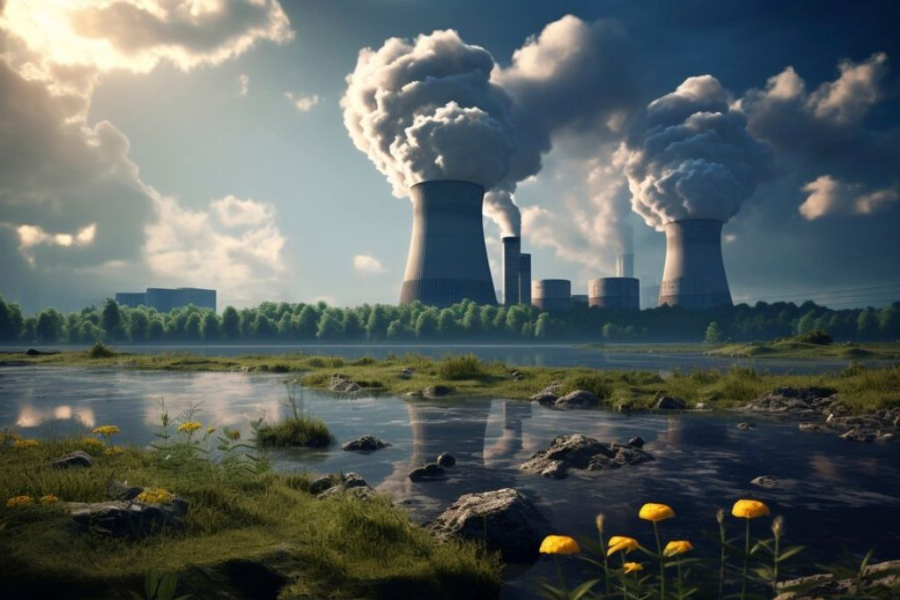Carbonnen: The Sustainable Revolution in Materials
In recent years, environmental concerns have taken center stage across various industries. As the world moves toward sustainability, there is a growing demand for materials that not only meet performance requirements but also minimize the ecological footprint. One such innovative material that is gaining traction in the field of sustainability is carbonnen.
Carbonnen is a cutting-edge material derived from sustainable sources, specifically designed to significantly reduce environmental impact. Unlike traditional materials that are often linked to resource depletion and pollution, carbonnen represents a forward-thinking solution to address pressing global issues. From its production to its diverse applications, carbonnen offers a promising alternative that holds the potential to change industries ranging from construction and automotive to technology and manufacturing.
In this article, we will explore what carbonnen is, its production process, its environmental benefits, and how it is revolutionizing various sectors by offering a more eco-friendly option. Let’s dive into this material that could play a crucial role in shaping a greener, more sustainable future.
What is Carbonnen?
Carbonnen is a new, sustainable material that combines advanced technology with eco-conscious design. The material is created by utilizing renewable resources such as biomass, recycled materials, and carbon capture technologies. Its primary appeal lies in its ability to reduce the environmental impact typically associated with conventional materials like concrete, steel, or plastic.
The term “carbonnen” refers to a category of materials designed to optimize carbon usage, either by incorporating carbon that has been captured from the atmosphere or by improving the efficiency of carbon-based production methods. This innovative material is engineered to be lightweight, durable, and versatile, making it suitable for a wide range of applications.
The Production of Carbonnen
One of the key selling points of carbonnen is its sustainable production process. Traditional materials such as steel or cement contribute significantly to global greenhouse gas emissions. For instance, cement production alone is responsible for a large percentage of the world’s CO2 emissions. Carbonnen, on the other hand, is produced in a way that minimizes these harmful emissions.
The production process of carbonnen involves several key steps that ensure minimal environmental impact:
- Sourcing Sustainable Raw Materials: Carbonnen is made from renewable resources, including biomass, plant-based fibers, and waste materials that would otherwise contribute to landfill. By repurposing waste, carbonnen significantly reduces the need for raw materials extracted through traditional mining or forestry practices.
- Carbon Capture Technology: A unique aspect of carbonnen is its use of carbon capture technologies during production. Carbon emissions are captured and stored, preventing them from being released into the atmosphere. Some forms of carbonnen even incorporate stored carbon into the material itself, making it a carbon-negative solution.
- Energy-Efficient Manufacturing: The manufacturing process of carbonnen is designed to use less energy compared to traditional materials. Advanced techniques such as low-temperature processing and the use of renewable energy sources further reduce the carbon footprint of carbonnen.
- Recycling and Circularity: Carbonnen is designed with a focus on circularity. This means that once the material reaches the end of its life, it can be recycled and repurposed into new products, reducing the need for raw material extraction and further conserving natural resources.
Environmental Benefits of Carbonnen
The most significant advantage of carbonnen is its ability to mitigate environmental impact. Let’s break down some of the key environmental benefits of this innovative material:
- Reduced Carbon Emissions: Carbonnen has the potential to drastically cut carbon emissions during production. By incorporating carbon capture technologies, it prevents CO2 from being released into the atmosphere, making it a viable solution for combating climate change. Some forms of carbonnen even have a net-negative carbon footprint, meaning they absorb more carbon dioxide than is emitted during production.
- Sustainable Sourcing: By relying on renewable resources like biomass and waste materials, carbonnen reduces the environmental impact associated with traditional resource extraction. This shift helps reduce deforestation, soil degradation, and other ecological issues related to mining and quarrying.
- Energy Efficiency: The energy required to produce carbonnen is lower than that of conventional materials. This is particularly important in industries such as construction and manufacturing, where energy consumption is a significant contributor to overall carbon footprints. Carbonnen’s energy-efficient production process helps to curb overall resource usage.
- Waste Reduction: Carbonnen incorporates waste materials, reducing the amount of waste that ends up in landfills. By repurposing waste products, carbonnen supports the circular economy model, where materials are continuously reused and recycled rather than discarded.
- Durability and Longevity: The durability of carbonnen ensures that it has a long lifespan, meaning that it won’t need to be replaced frequently. This reduces the need for constant production and the associated environmental costs, contributing to a more sustainable approach in industries that rely on materials like construction, automotive, and electronics.
Applications of Carbonnen
Carbonnen’s versatility makes it a viable option for a wide range of industries. Some of the key sectors where carbonnen is making an impact include:
- Construction Industry: Carbonnen is being used as a substitute for traditional building materials such as concrete, steel, and brick. Its lightweight yet durable nature makes it an excellent choice for creating energy-efficient buildings. In addition, its eco-friendly production process and carbon-negative properties align with the growing demand for green buildings.
- Automotive Industry: The automotive industry is constantly looking for ways to reduce the weight of vehicles while maintaining safety and durability. Carbonnen offers a promising solution by being a lightweight material that can be used in various components, including interior parts, structural elements, and even body panels. Its use can help reduce fuel consumption and emissions in vehicles, contributing to a more sustainable transportation sector.
- Technology and Electronics: Carbonnen is being explored for use in electronic devices such as smartphones, tablets, and computers. By incorporating carbonnen into their designs, manufacturers can reduce the environmental impact of electronics production while ensuring that their products are durable and long-lasting.
- Packaging Industry: The packaging industry is one of the largest contributors to global plastic waste. Carbonnen provides a sustainable alternative to traditional plastic packaging by offering a biodegradable, recyclable option that can be used in a variety of consumer goods. Its ability to reduce waste and promote circularity makes it a popular choice for companies looking to adopt more sustainable packaging solutions.
- Energy Storage: Carbonnen’s potential for energy storage applications is also being explored. Its unique properties may allow it to be used in the creation of efficient, long-lasting batteries that can store renewable energy. This could help facilitate the transition to renewable energy sources by providing reliable energy storage solutions.
Conclusion
Carbonnen is at the forefront of a sustainability revolution. By offering a material that combines high performance with eco-friendly production processes, carbonnen has the potential to reshape industries and reduce our collective carbon footprint. Whether used in construction, automotive manufacturing, electronics, or packaging, carbonnen demonstrates that it is possible to create materials that meet modern demands while also addressing environmental challenges.
As industries continue to embrace sustainable practices, carbonnen will undoubtedly play a key role in building a greener future. With its ability to reduce emissions, conserve resources, and promote recycling, carbonnen stands as a testament to the potential of innovation in creating a more sustainable world.
Explore exhilarating adventures and experiences at discoverthrill







